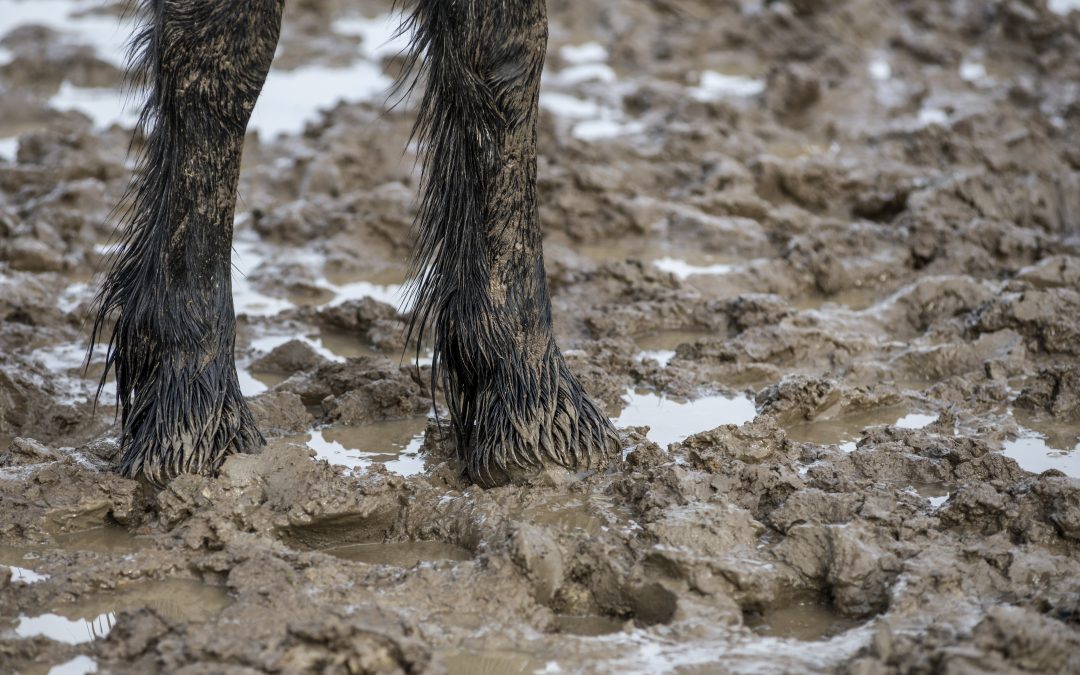It’s that time of year when we are all knee deep in the wet and sticky stuff. Whilst this topic comes up every year, it is one that is most definitely worth talking about. Hopefully by talking about it on this blog the weather will finally start to improve.
Mud fever and abscesses are both common health issues that can affect horses, especially those exposed to wet or muddy conditions. Here’s an overview of each:
Mud Fever (also known as Pastern Dermatitis):
Mud fever is a skin condition that primarily affects the lower limbs of horses, especially the pasterns, heels, and fetlocks. It’s caused by a combination of factors, including prolonged exposure to wet, muddy conditions, bacteria (often Dermatophilus congolensis), and sometimes fungi. The moisture and abrasions from mud can weaken the skin’s natural defences, allowing bacteria to invade and cause infection.
Clinical Signs and Symptoms of mud fever may include:
- Swelling, redness, and inflammation of the affected areas
- Crusty scabs or sores
- Hair loss
- Pain or sensitivity in the affected limbs
- Lameness in severe cases
Treatment typically involves:
- Thoroughly cleaning and drying the affected area
- Removing scabs gently to allow for proper cleaning and healing – this can be done using clingfilm and baby oil.
- Applying topical treatments such as antibacterial or antifungal creams prescribed by a vet
- Providing dry, clean bedding and turnout areas to minimize further exposure to moisture
- Sometimes, systemic antibiotics may be necessary for severe cases Prevention is key and involves:
- Keeping turnout areas well-drained and providing dry shelter
Abscesses:
An abscess is a localized pocket of pus caused by a bacterial infection. In horses, abscesses often occur due to wet muddy weather which in turn softens the hoof capsule. Bacteria can then enter the hoof through a puncture wound or a defect in the hoof wall, leading to infection and inflammation.
Clinical Signs/Symptoms of a hoof abscess may include:
- Sudden onset of severe lameness
- Heat in the affected hoof
- Increased digital pulse
- Reluctance to bear weight on the affected limb
- Can look like the horse has broken their leg
- Sometimes, visible swelling or drainage of pus from the coronary band or sole
The colour and consistency of the pus is also an important sign to notice.
- Black is good, this colour is normal and as long as it is draining well then there should be no issues.
- Yellow or red is not a normal colour for foot abscess and a vet or vet advice should be sought in these cases
Treatment:
Treatment consists of opening the abscess up to allow the abscess to drain.
- Wet poulticing for at least 3-5 days
- Pain relief – if the horse is comfortable they are more likely to bear weight on the abscessed area and therefore allow pressure to help with bursting the abscess.
- When the abscess has stopped draining then a dry poultice with iodine on it to help with hardening the sole will minimise the risk of further abscessation
- Shoes: depending on foot conformation, sometimes we need to get the soles off the ground (when wet) to prevent more bruising and therefore more abscesses.
- Foot conformation: those with long toes or under run heels are more likely to get foot abscesses even in good dry weather.
If you have any further questions on these topics please do not hesitate to contact us on 01782 898102.

